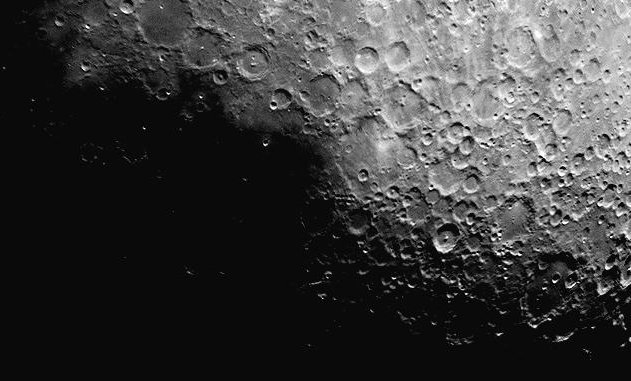
显然,月球殖民地必须面对的最大问题之一(除了空气、食物、水、温度和宇宙辐射以及没有足够的个人空间以及到达那里和回家之外)是月球尘埃,它是如此之细,以至于它无处不在,非常粘人,并且会弄脏设备。月球尘埃感觉像柔软的雪,但同时又具有磨蚀性。它闻起来也像用过的火药。
就卫星而言,我们的卫星是巨大的。它比冥王星还大,这意味着我们实际上是由一颗矮行星绕行的。但它是一颗贪婪的卫星,吸收了我们的旋转能量,因此在大约450亿年内,地球和月球将被潮汐锁定(月球将永远在天空中的同一位置),地球日将持续约45小时。
在这本非常短(101页)的书中,控制月球的高科技行业的工人和研究人员无助地看着地球走向世界大战和月球生命供应的切断。
“斯旺威克以独特的神韵和风格编织了这个故事......这是一部有趣且具有挑衅性的中篇小说。
——《出版人周刊》
月亮在这个德洛克朋克(装饰艺术时代的科幻小说——大约 1920 年代和 30 年代)的故事中并没有发挥重要作用,但它兴高采烈的疯狂使它值得一读。
Severin Unck 的父亲是 1986 年另一位哥特式浪漫片的著名导演,由于爱迪生家族囤积专利,有声电影仍然是一项大胆的创新。为了反抗她父亲的激情、阴谋和来自外界的精神,塞弗林开始制作纪录片,穿越太空,调查海王星的悬浮崇拜和火星的无法无天的沙龙。因为这不是我们的太阳系,而是来自经典科幻小说的太阳系,其中所有行星都有人居住,我们乘坐美丽的火箭穿越太空。塞弗林是一个奇幻宇宙中的现实主义者。
But her latest film, which investigates the disappearance of a diving colony on a watery Venus populated by island-sized alien creatures, might be her last…
Life As We Knew It is another entry in the crowded YA Dystopia space, but it’s a strong debut by author Pfeffer.
High school sophomore Miranda’s disbelief turns to fear in a split second when an asteroid knocks the Moon closer to Earth, like “one marble hits another.” The result is catastrophic. How can her family prepare for the future when worldwide tsunamis are wiping out the coasts, earthquakes are rocking the continents, and volcanic ash is blocking out the sun? As August turns dark and wintery in northeastern Pennsylvania, Miranda, her two brothers, and their mother retreat to the unexpected safe haven of their sunroom, where they subsist on stockpiled food and limited water in the warmth of a wood-burning stove.
Told in a year’s worth of journal entries, this heart-pounding story chronicles Miranda’s struggle to hold on to the most important resource of all—hope—in an increasingly desperate and unfamiliar world.
“Absorbing from first page to last.”
— Publishers Weekly (starred review)
When they found the corpse in a grave on the Moon, wearing a spacesuit of unfamiliar design, his identity was a complete mystery. Analysis showed that the deceased was 50,000 years old—meaning that he had somehow died on the Moon before the human race even existed.
A good yarn, but unfortunately, its depiction of women in science is dated (i.e., they’re secretaries). And for a book published in 1977, there’s not much excuse for that.
Another classic by the grandmaster.
In the twenty-second century, Earth obtains limitless, free energy from a source science little understands: an exchange between Earth and a parallel universe, using a process devised by the aliens. But even free energy has a price. The transference process itself will eventually lead to the destruction of the Earth’s Sun—and of Earth itself.
Only a few know the terrifying truth—an outcast Earth scientist, a rebellious alien inhabitant of a dying planet, a lunar-born human intuitionist who senses the imminent annihilation of the Sun. They know the truth—but who will listen? They have foreseen the cost of abundant energy—but who will believe? These few beings, human and alien, hold the key to Earth’s survival.
(The Moon makes an appearance the third part of the novel.)
Vice President Charlie Haskell, who will travel anywhere for a photo op, is about to cut the ribbon for the just-completed American Moonbase. The first Mars voyage is about to leave high orbit, with a woman at the helm. Below, the world is marveling at a rare solar eclipse.
But then an amateur astronomer discovers a new comet. Named for its discover, Tomikois a “sun-grazer,” an interstellar wanderer with a hundred times the mass and ten times the speed of other comets. And in less than five days Tomiko will crash into the Moon, shattering it into a cloud of superheated gas, dust, and huge chunks of rock that will rain down on the earth, causing chaos and killer storms, possible tidal waves inundating entire cities…or worse: a single apocalyptic worldwide “extinction event.”
In the meantime, the population of Moonbase must be evacuated by a hastily assembled fleet of shuttle rockets. There isn’t enough room or time for everyone. And the vice president, who rashly promised to be last off, is trying to figure out how to get onboard without eating his words.
“McDevitt’s scrupulous research and ability to bring the arcane intricacies of space engineering within the grasp of the earthbound make this a fine-tuned disaster to remember.”
— Publishers Weekly
Two civilizations collide: one is Earth in the early 21st century, rushing toward self-inflicted nuclear doom. The other is the distant world of Mollan, whose inhabitants have achieved great longevity and the power to transport themselves instantly from star to star.
On Earth’s side, there is Denny Hargate, whose indomitable courage drives him to alter the course of history. On their side is Gretana ty Iltha, working on Earth as a secret observer, who dreams of returning to the delights of her world’s high society, but who gets caught up in a cosmic train of events leading to an explosive climax.
Revealing the Moon’s involvement in this story would be a bit of a spoiler, so I’ll leave you to find out for yourself.
Fleeing Earth after an alien invasion, the human race stands on the threshold of evolution. Their new home is Luna, a moon colony blessed with creature comforts, prolonged lifespans, digital memories, and instant sex changes.
But the people of Luna are bored, restless, suicidal—and so is the computer that monitors their existence…
“Varley’s tight, clean writing, full of wit and good humor, evokes despair, joy, anger and delight. His Luna is packed with wild inventions, intriguing characters and stunning scenery.”
— Publishers Weekly
Written almost a century before humans started exploring space, Jules Verne’s prophetic novel of man’s race to the stars is a classic adventure tale enlivened by broad satire and scientific acumen.
When the members of the elite Baltimore Gun Club find themselves lacking any urgent assignments at the close of the Civil War, their president, Impey Barbicane, proposes that they build a gun big enough to launch a rocket to the moon. But when Barbicane’s adversary places a huge wager that the project will fail and a daring volunteer elevates the mission to a “manned” flight, one man’s dream turns into an international space race.
Despite my love for Mary Shelley’s Frankenstein, The Man in the Moone might be counted as one of science fiction’s first stories, along with astronomer Johannes Kepler’s Somnium.
After killing a man in a duel, Gonsales is forced to flee Spain. He ends up riding giant swans to the Moon, where he discovers a tall Christian people living in a Utopia. This book was well-known in the 1600s, and even inspired several parodies.
(Frankenstein is better, though.)
The Moon wants to kill you.
Maybe it will kill you when the per diem for your allotted food, water, and air runs out, just before you hit paydirt. Maybe it will kill you when you are trapped between the reigning corporations—the Five Dragons—in a foolish gamble against a futuristic feudal society. On the Moon, you must fight for every inch you want to gain. And that is just what Adriana Corta did.
As the leader of the Moon’s newest “dragon,” Adriana has wrested control of the Moon’s Helium-3 industry from the Mackenzie Metal corporation and fought to earn her family’s new status. Now, in the twilight of her life, Adriana finds her corporation—Corta Helio—confronted by the many enemies she made during her meteoric rise. If the Corta family is to survive, Adriana’s five children must defend their mother’s empire from her many enemies… and each other.
“McDonald creates a complex and fascinating civilization featuring believable technology, and the characters are fully developed, with individually gripping stories.”
― Publishers Weekly (starred review)
H.G.威尔斯的“登月第一人”是古怪的卡沃尔和他的旅伴贝德福德,他们在太空中航行一个反重力球体(装满了华丽的高端饼干),然后粗暴地登陆月球。作为地球的弃儿,他们练习月球运动,迷失在月球丛林的荒野中,并与生活在月球洞穴中的智能生命形式对抗。
扩大月球的人口取决于建立一个繁荣的旅游业。但是,当一艘名为“塞勒涅号”的原型旅游船遇到月震时,这艘船坠落在被称为“口渴之海”的巨大液态细月尘下。
旅游巡洋舰塞勒涅号的乘客和船员的时间已经不多了,他们被关押在令人窒息的月球尘埃海洋中。人类的聪明才智能否战胜一个完全陌生的环境的无情不可预测的条件?
读完大多数书后,我会把它们放下,然后想,“那是一本好书”,或者“结局很糟糕”,或者“我饿了”。
但是有了《器皿四部曲》,我放下了这本大书,想知道我到底发生了什么。
我的视野向奇怪的方向扩展,我的生活中多了一点奇怪的快乐。
这四部 Ware 小说(Software、Wetware、Freeware 和 Realware)以一种无所畏惧的荒谬、令人敬畏的可读性的方式探索意识作为一种信息模式。总而言之,它们是一个达达主义的赛博朋克之旅,会让你的大脑感觉就像在苏打水浴中一样。这些书都像蝙蝠一样从地狱中移动,充满了足够四十本普通科幻小说的想法,当你阅读它们时,你可以感受到背景中的诗歌。
月亮直到后几本书才出现,但说得更多会破坏惊喜。
像大多数斯蒂芬森的书一样,阅读Seveneves(回文!)是一种承诺,但是一种回报。它很长,但比 Cryptonimoconocicomicon 更容易阅读(拼写可能有点偏差?
灾难性事件使地球成为一颗定时炸弹。在与不可避免的激烈竞赛中,全球各国联合起来制定一项雄心勃勃的计划,以确保人类在大气层之外的外层空间生存。
但是,人性的复杂性和不可预测性,加上不可预见的挑战和危险,威胁着勇敢的先驱者,直到只剩下少数幸存者。
五千年后,他们的后代——七个不同的种族,现在有三十亿人——踏上了另一场大胆的旅程,进入未知世界,前往一个被灾难和时间彻底改变的外星世界:地球。
(月亮在故事中扮演主角,但说得更多会揭示太多。
“对于斯蒂芬森来说,没有纤细的寓言或书的中篇小说:他的愿景是史诗般的,他需要整个世界——在这种情况下,太阳系——来容纳它们......睿智、诙谐、精心制作的科幻小说。
— Kirkus 评论
这本书被广泛认为是海因莱因的最高成就,也是有史以来最重要的科幻小说之一。剧情围绕着一个月球殖民地反抗地球的统治展开,但充满了政治、可疑的行为,以及一个完全想象的未来人类社会,必须处理两个世界的问题。







 文章探讨了月球殖民地面临的关键问题,如月球尘埃的特性及其对设备的影响,同时穿插了多部以月球为背景的科幻作品,展示了人类对月球的幻想与现实挑战的交织。
文章探讨了月球殖民地面临的关键问题,如月球尘埃的特性及其对设备的影响,同时穿插了多部以月球为背景的科幻作品,展示了人类对月球的幻想与现实挑战的交织。
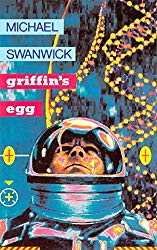
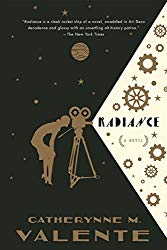
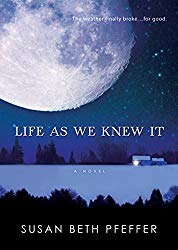

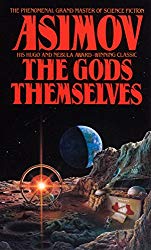
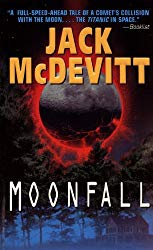
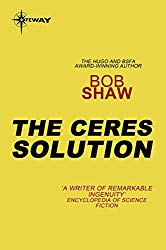

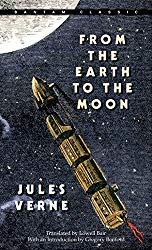


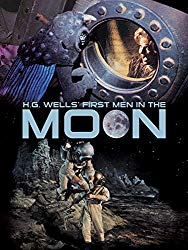
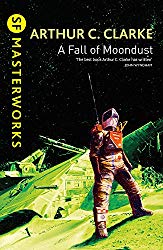
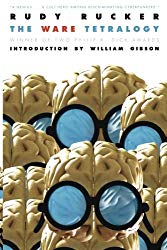
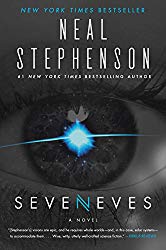

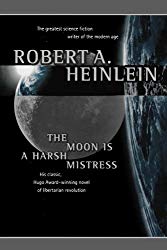
















 2万+
2万+

 被折叠的 条评论
为什么被折叠?
被折叠的 条评论
为什么被折叠?








